什么是梅酒
梅酒是一种日本梅子利口酒。通过梅酒中梅的陈酿过程,梅味释放和烈酒实现了完美结合。它很好地平衡了甜度、酸度和梅核散发出的独特清香。
在古代日本医学中,梅子被日本人当做一种健康补品。梅酒是把梅子与糖一起浸入烈酒中制作而成,这种方法可以提取梅子中的独特成分。它的绵软口感和芳香通过一个自然缓慢的浸泡陈酿过程而被提取出来。梅酒做为一种传统利口酒,深受日本人的喜爱。
令人神清气爽的柠檬酸:梅子的香味来自于柠檬酸。柠檬酸具有的神清气爽味道可以刺激食欲。梅酒同样还含有苹果酸和琥珀酸。当您感到疲劳时,喝点梅酒能纾解疲劳,令人精神一振。
蒸馏酒会提取梅子全部的营养和凤味。:梅子的凤味不仅从果肉中提取,而且还从果核中提取。果核的香味通在烈酒的作用下提取至酒中。这意味着饮用了梅酒,您同时享用了果实和果核。
梅子富含矿物质和纤维质。:梅子富含钾、镁和钙等矿物质以及纤维质。
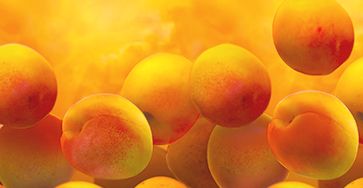
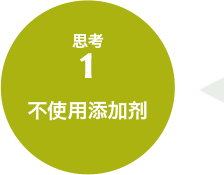

CHOYA梅酒不使用添加剂。
CHOYA梅酒不使用酸味料、香料、着色料(焦糖素)。
如果把人工的东西作为原料伪造使用,可以更简单的做成梅酒。
但是,我们想不应该那样做。要制造出更好品质梅酒的话应该追求不能蒙混过关的正宗产品,我们确信这也是消费者所期望的。

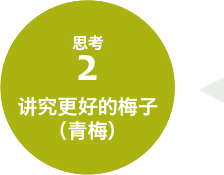

CHOYA梅酒是把青梅果浸泡一年左右,慢慢让梅果的成分提炼出来,并让它完全成熟,用心来制造出激活梅子营养成分的梅酒。
虽然眼下也许会认为这样是用心过头,但是想把正宗好喝的梅酒奉献到消费者手里,是我们制造产品的“真正心愿”。

我们的梅酒是以上梦想的结晶。请用心品尝CHOYA梅酒。
梅子不同于李子
梅子(学名:Prunus mume Sieb. et Zucc)经常被误认为是李子(学名:Prunus somestica L),两者同属于蔷薇科樱桃类,但两者却有非常不同的特性。梅子的酸度有4-5%,而李子的酸度只有1-2%。当果肉成熟时,与其它有机酸相比,柠檬酸占了 更高的比率。梅子的果肉和表皮含有多元酚,果肉中还含有氨基酸。我们的研究显示,γ-氨基丁酸可能由谷氨酰胺酸生成。
在日本和中国历史上,梅子都曾被用于医药用途。在日本,传统上认为梅可用于治疗食物中毒、水中毒和血液中毒。
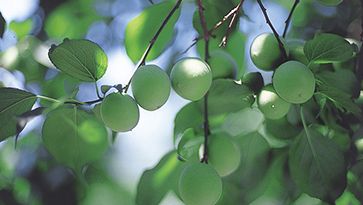
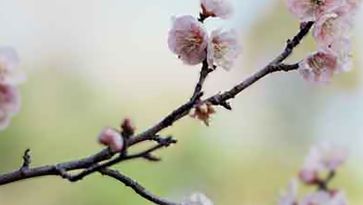
梅子中还含有多元酚,多元酚的量随着其成熟而增加。
梅果肉中还含有柠檬酸等有机酸。

梅子和梅酒的历史
Ume has always been revered throughout Asia. Still today, the Japanese appreciate ume for its nutritional value.
- 750~
-
c. 750 In the famous Man'yoshu, Japan's oldest collection of waka poems, the visually appealing ume blossoms are incorporated into 118 poems, compared to only 42 for cherry blossoms. 918 “Honzowamyo” the oldest Japanese dictionary of pharmacy, mentions ume. 960 It is said that Emperor Murakami recovered from his illness by drinking a special tea blend made with “*umeboshi and kombu (kelp)”. 984 The medicinal properties of ume are mentioned in the “Ishinho”, Japan's oldest medical publication. - 1550~
-
c. 1550 During the Sengoku (Warring States) Era, Lord Kuroda Josui issues an edict to all of his vassals stating that each of them must plant three ume trees at the birth of their sons. There were many feudal lords during this time that ordered the planting of ume trees as a source of medicine in preparation for war. 1619 Tokugawa Yorinobu becomes Lord of Kii province and soon Ando Naotsugu instigates a policy of encouraging ume cultivation. 1697 The term Umeshu appears for the first time in the “Honcho-shokkan” book of Japanese cuisine. Ume is described as a medicinal agent that stops the accumulation of phlegm, relieves parched and sore throat, improves the appetite, and dissolves poisons. 1712 In the Wakan-sansai-zue encyclopedia, ubai (smoked ume), is described as a medicinal agent that aids the blood flow in the lungs and spleen. 1817 The Shakoku-Koden-Hihou states that intestine inflammation sufferers should grind green ume to a pulp and let it dry under the sun and kneed it into a paste. 1878 There is an outbreak of cholera in Japan and umeboshi are in great demand. 1886 A prosperous ume farming business is started in the Kishu region. - 1904~
-
1904 Umeboshi becomes part of the food supplies sent to frontline soldiers during the Russo-Japanese War. The term hi-no-maru bento (a boxed lunch of white rice with a pickled ume in the centre, recalling the Japanese flag) originates during this time. 1914 The predecessor of CHOYA UMESHU CO., LTD. begins viticulture. 1950 Research begins to determine the finest variety of ume in Japan and the now-famous Nanko-ume is finally certified as such afterin five years. 1952 In America, E.T.Krebs gives the name B17 to the amygdalin found in ume. 1962 Japan's new Liquor Tax Law allows the home production of fruit based liqueur. 1965 Nanko-ume is registered to the Ministry of Agriculture and Forestry.
CHOYA starts radio and television advertisements.2005 Umeshu boom begins.
*umeboshi: pickled ume fruit, salted and sun-dried for a few days. Umeboshi is considered a health food in Japan.
References
- “Minabegawa Village Ume Promotion House Book of Data”
- “A Dictionary of the Origins of Japanese Cuisine” (Dohosha Printing)
- “Japanese Encyclopedia of Food” (Special edition history publication)
- “Chronological Classification of Japanese History” (Tokyo Shoseki)
- Independent research by Choya Umeshu Co., Ltd.
*The information provided on this website is provided for information purposes only and is not intended to be used to diagnose, treat, cure or prevent any disease.








